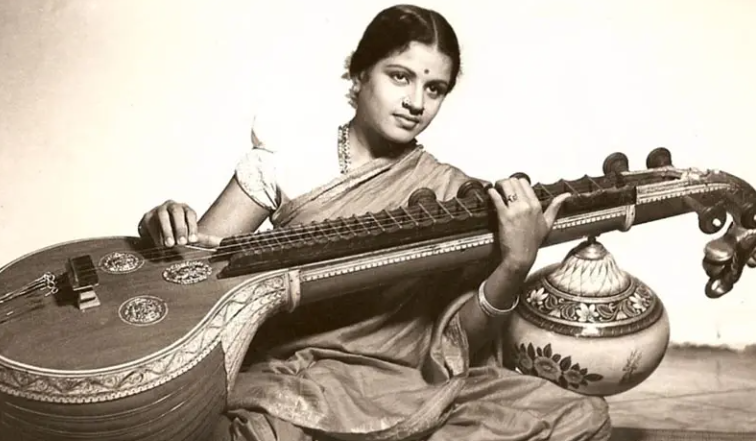The veena is a classical Indian musical instrument, renowned for its rich, melodic sound. It holds a central place in Carnatic and Hindustani music traditions, both of which have seen the veena evolve into different styles and designs over the years. If you’re a budding musician or someone interested in learning the veena, you might wonder, is long nails required to play veena? This question is a common one, and the answer is more nuanced than a simple yes or no.
In this article, we will explore the role of nails in playing the veena, whether long nails are necessary, and how they affect playing technique. We’ll also look at the importance of finger positioning, finger strength, and other factors involved in mastering this beautiful instrument.
Understanding the Veena
Before addressing the specific question about nails, it’s important to understand the veena and how it is played. The veena is typically played by plucking its strings with the fingers, and the instrument has multiple strings, usually ranging from 4 to 7, depending on the design. It is a stringed instrument, which is usually accompanied by a resonator body made from a large gourd or similar material.
The strings of the veena are tuned in a particular way, and they produce sound when plucked. The sound quality and tonal clarity largely depend on how the player strikes or plucks the strings. Musicians use their fingers to pluck the strings and, in some cases, use a plectrum (a small pick) for a sharper tone.
Role of Nails in Playing the Veena
When it comes to playing the veena, your fingers are the primary contact points for the strings. The use of nails in this process is debated, and it’s a factor that depends on your personal technique, the style of veena you are playing, and your comfort.
Is long nails required to play veena?
The Traditional Approach to Playing the Veena
In traditional veena playing, the fingers are the main tool used to produce sound. Some musicians prefer to use their nails to create a brighter, sharper tone while plucking the strings. The idea behind long nails is that they help produce a more distinct and clear sound by allowing the player to strike the strings with the tips of the fingers and nails. However, it’s not strictly required to have long nails.
For example, in the case of the Chitra veena or rudra veena, players often use their nails to pluck the strings more precisely, as these instruments demand a sharper plucking technique for clear sound. The fingernails act like a natural plectrum, producing a sound that’s both clear and resonant.
Nails vs. Finger Pads
While some musicians use their nails to pluck the strings, many veena players rely on the pads of their fingers. The decision to use nails or the pads of fingers depends on personal preference, comfort, and technique.
Using the pads of the fingers provides a softer and mellower tone, which is preferred by some musicians. In contrast, nails give the sound a sharper and more distinct quality. So, is long nails required to play veena? The answer is no, but long nails do help in achieving a certain tonal quality, which is why they are favored by some.
Should You Grow Long Nails?
The question of whether long nails are essential often arises among beginners who want to emulate professional veena players. It is not mandatory to have long nails, but it’s worth considering the pros and cons.
Advantages of Long Nails
- Sharper Tone: Long nails can help produce a sharper, crisper sound when plucking the strings.
- Clearer Attack: Nails can add clarity to the attack (the first sound made when striking the strings), especially on the higher-pitched strings of the veena.
- Stylistic Choice: Many classical musicians prefer using long nails to stay in line with tradition, as long nails have historically been part of the veena-playing aesthetic.
Disadvantages of Long Nails
- Nail Care: Long nails require regular maintenance and care. If a nail breaks or gets damaged, it can affect your ability to play.
- Finger Strength: Relying on nails can sometimes limit finger strength, as you are focusing more on the nails to create sound, not fully engaging the entire finger.
- Discomfort: For some players, long nails can be uncomfortable, particularly if the nails are not shaped properly or if they interfere with other parts of playing.
Professional Veena Players: Nail Preferences
Many professional veena players, especially those in the Carnatic music tradition, prefer to keep long nails. These musicians often shape their nails carefully and maintain them so that they can produce the desired tone. However, there are also many professional musicians who do not rely on their nails but use the pads of their fingers to pluck the strings.
In fact, some musicians believe that nails should not be the focal point and that strong, controlled finger movements should take precedence over the length of nails. They argue that good technique, including precise finger control, produces better sound and more consistent performance.
Other Factors to Consider for Playing the Veena
While nails do play a role in how the veena sounds, there are several other important factors that contribute to playing the instrument effectively:
- Finger Strength and Dexterity: One of the most important aspects of playing the veena is having strong, dexterous fingers. Whether you use your nails or not, your finger strength will have a significant impact on your ability to pluck the strings cleanly and consistently.
- Proper Finger Positioning: Correct finger positioning and the way you hold your hand while playing the veena are essential for both comfort and sound quality. Using the pads of your fingers effectively is just as important as having nails, if not more so.
- Practice: Like any instrument, consistent practice is key to developing skill and achieving good sound quality. Focus on improving your technique through regular practice rather than obsessing over your nails.
- Veena Type: The type of veena you play may also influence your approach. Different styles and veena models (like the Rudra veena, Saraswati veena, or Chitra veena) may require different techniques, which may or may not involve the use of nails.
Conclusion
So, is long nails required to play veena? No, long nails are not a strict requirement. While they can help produce a sharper, brighter sound and are traditionally used by some professional veena players, they are not mandatory. What truly matters is your technique, finger strength, and consistency.
In the end, whether you have long nails or not, it’s your practice, precision, and understanding of the instrument that will allow you to master the veena. Focus on developing good technique, and if long nails work for you, then go ahead and use them. If not, you can still play beautifully with the pads of your fingers.
FAQs
Do I need long nails to play veena?
No, long nails are not required, but they can help achieve a sharper tone.
Can I play veena without using nails?
Yes, many veena players use the pads of their fingers instead of their nails.
How do long nails affect the sound of the veena?
Long nails provide a sharper, clearer sound when plucking the strings, especially on higher-pitched notes.
Can I play veena with short nails?
Yes, short nails can be used, but the sound might be softer compared to using long nails.
What’s the best way to care for long nails if I play veena?
Regular trimming and filing to keep nails even, along with moisturizing, are essential for proper nail care.
Do all professional veena players use long nails?
No, some professional players prefer using the pads of their fingers instead of their nails.
How can I improve my finger strength for playing the veena?
Practicing regularly, using finger exercises, and developing good technique will improve finger strength.
Can nails interfere with playing the veena?
Long nails can sometimes cause discomfort or interfere with finger positioning, depending on how they are maintained.
What type of veena requires the most use of nails?
The Rudra veena and Chitra veena are commonly played with nails for a brighter tone.
Do I need to change my technique based on the type of veena I play?
Yes, different types of veenas may require slight adjustments in technique, including whether or not you use your nails.






